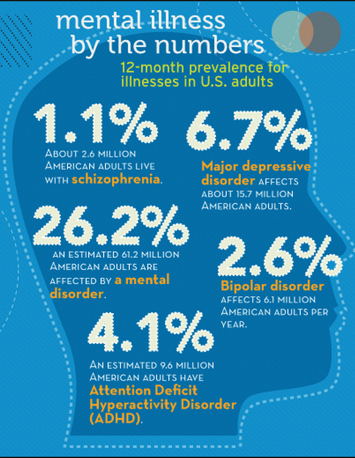Mental Health Awareness | distortions, hallucinations, a larger issue

 Mental Health Awareness | Visual distortions and hallucinations were symptoms particularly strongly linked to self-destructive behavior.
Mental Health Awareness | Visual distortions and hallucinations were symptoms particularly strongly linked to self-destructive behavior.
It is important to get help before things get out of hand. Here is some great information on why recognizing these types of patterns can help according to a recent study conducted at the Helsinki University Hospital, Finland.
Previous research on adolescents with psychological symptoms has also shown that self-destructive thought patterns are more common among those who show a higher risk of psychosis than those who do not show such a risk.
The risk of psychosis is evaluated on the basis of whether the patient has experienced psychosis-like episodes, which are milder and occur less frequently than fully developed psychosis.
A research group led by Docent Niklas Granö, PhD (Psychology), found self-destructive thought processes in one-third of the on average 15-year-old adolescents who were referred to the Early Psychosis Recognition and Intervention group at the HUCH Department of Psychiatry due to incipient mental disorders.
The study indicated that all the risk symptoms of psychosis were more common in these adolescents than in those with psychological symptoms but no self-destructive thoughts. Depressive symptoms was also diagnosed more commonly in adolescents with risk symptoms of psychosis.
"Our study shows that self-destructive thoughts emerge simultaneously with the risk symptoms of psychosis, that is, long before psychosis is manifest," Granö explains. "School health care, for example, should pay early attention to potential self-destructive thoughts and risk symptoms of psychosis in adolescents with mental issues."
"Since visual distortions or hallucinations are most clearly linked to self-destructive thoughts, adolescents should be asked directly whether they have ever suffered from them," Granö adds.
The cross-sectional study conducted at the Helsinki University Central Hospital studied 309 adolescents who were participating in the Jorvi Early Psychosis Recognition and Intervention (JERI) research project of the HUCH Department of Psychiatry from 2009 to 2013.
 Studies like these show that awareness is key to recognizing patterns that lead to negative behaviors. No one is immune to mental health issues today and down the road, the benefit of shared observations / studies hopefully will help us in getting to the problem before the problem gets to us.
Studies like these show that awareness is key to recognizing patterns that lead to negative behaviors. No one is immune to mental health issues today and down the road, the benefit of shared observations / studies hopefully will help us in getting to the problem before the problem gets to us.Getting proper help to better understand each and every person as an individual with specific needs is much better than just lumping people into a simple diagnosis (box or category). One size never fits all.



